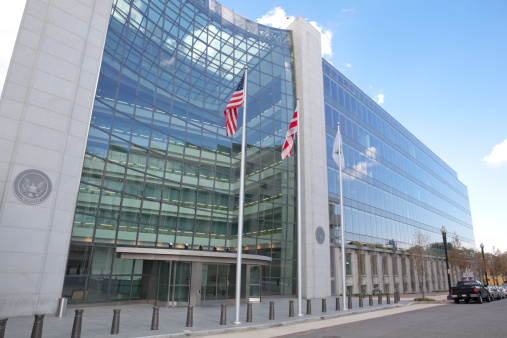
New rule addresses valuation problems that may have contributed to financial crisis.
According to the U.S. Securities and Exchange Commission, market-wide failure to value asset-backed securities accurately contributed significantly to the 2008 financial crisis. To address the challenges investors face when valuing securities, the SEC has adopted a new rule to promote greater transparency and to increase investors’ access to information.
SEC Chair Mary Jo White announced that the agency intends to “protect America’s investors by enhancing the disclosure requirements for asset-backed securities and by making it easier for investors to review and access the information they need to make informed investment decisions.” The rule applies to the class of securities backed by commonly bundled assets, such as mortgages, auto loans, and other securities.
Asset-backed securities are financial instruments created by buying and bundling loans, like mortgage and student loans, into asset pools and then selling them to investors. These bundled securities are often resold, creating a unique challenge for the credit ratings agencies and investors who evaluate them. The SEC says the new rule will help investors evaluate securities by making changes at three primary levels.
First, the new rule requires issuers of certain asset-backed securities to disclose more information to the public about the assets underlying the security. Second, it amends the process by which issuers of some asset-backed securities publicize that information under the Securities Act and the Exchange Act. Finally, it changes the criteria by which certain assets may qualify for expedited registration with the SEC.
The rule notes that credit-ratings agencies failed to measure and account for the risks of complex asset-backed securities leading up to the financial crisis. Many investors did not have access to the information they needed, or they unduly relied on credit ratings without performing their own due diligence. To ensure greater transparency, issuers of these securities will now be required to disclose additional “asset-level” information about the assets backing these securities.
As part of their disclosures, issuers must now supply data about the payment stream behind each asset. Payment streams include information about the contractual terms, scheduled payment amounts, interest rate calculations, and how payment terms change over time. Disclosures must also contain data about collateral related to the asset, such as the physical location of any collateral property, valuation data related to that property, and the loan-to-value ratio of such collateral.
Issuers must also include information about the performance of each asset over time. This comprises data showing whether a debtor is making payments on time and any information related to loss-mitigation efforts by the servicer, including previous collection efforts or risks that may pass on to investors.
These data are meant to make it easier for investors to value the risks associated with asset-backed securities. This information will be made available on the SEC’s public database and must be disclosed in a common, standardized digital format so that it is easily accessible for downloading and analysis.
The rule also contains amendments to the timetable on which investors may purchase newly available securities. Previously, investors were able to purchase asset-backed securities at the same time information about the security was made available to the public. When demand for these securities was high, investors were pressured to buy them as soon as they became available, without time to make informed decisions. The new rule establishes a waiting period of three business days after a prospectus is released before the first sale of any security in the offering. The SEC expects this change to give investors time to perform due diligence without missing investment opportunities.
In order to access capital markets quickly, many investors try to expedite the registration of their securities. The SEC allows expedited registration of some securities subject to certain eligibility requirements, and the new rule amends the qualifications for this registration. Previously, these securities needed to be rated “investment-grade” by a credit rating agency in order to be eligible for expedited treatment. The new rule replaces credit ratings with the SEC’s own standards for expedited registration.
Also under the new rule, each prospectus accompanying a new offering must contain an endorsement certification by the CEO of the entity offering the security. The SEC hopes this change will promote greater CEO oversight of transactions and provide assurance to investors that securities have been vetted. Prospectuses must also contain an “asset review provision” requiring compliance with certain representations and warranties when “trigger” events occur. A certain percentage of assets in an asset pool falling into delinquency is one kind of trigger event. This too is intended to give investors confidence that an investment agreement’s terms will be enforced.
Moreover, each prospectus must now contain a dispute resolution provision giving parties the right to mediation or third-party arbitration. Additionally, prospectuses must include a provision that enables greater communication among the investing parties so that they can monitor the security and enforce their contractual rights.
Some investors report that the new rule will help them gather valuable information that, before the rule, was unavailable. This information could lead to better investment decisions. Yet because the rule only applies to a limited class of assets, it is unclear what effect it will have on the total asset-backed securities market. Still, the SEC expects that with the rule investors “will now be able to independently conduct due diligence to better assess the credit risk of asset-backed securities.”



